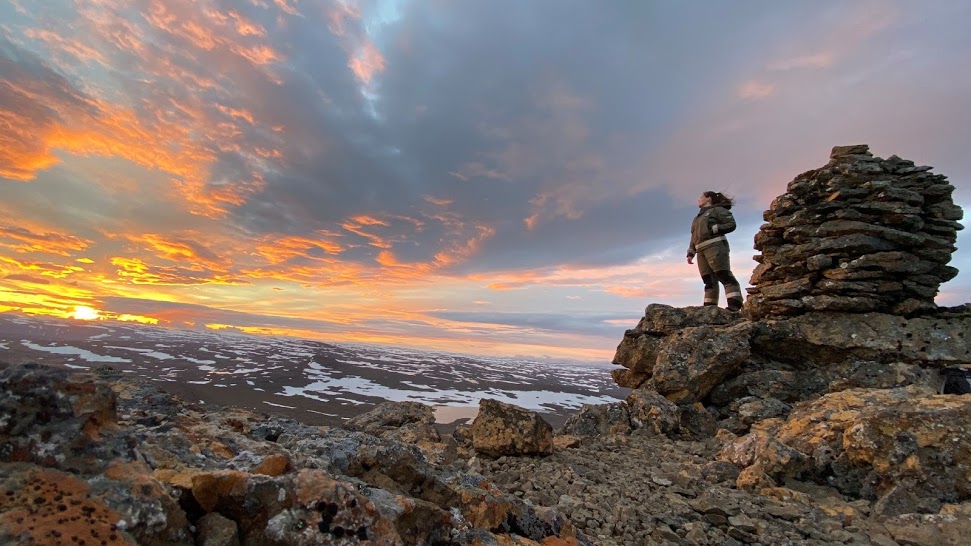Vinna við nýjar heimasíður Umhverfis- og orkustofnunar og Náttúruverndarstofnunar er í gangi. Heimasíða Umhverfisstofnunar er virk á meðan vinnunni stendur. Information in English
Hrafna-Flóki and Flókatóftir

According to Landnámabók (Icelandic Book of Settlements), Flóki Vilgerðarson was the first Nordic man to spend a winter in Iceland, and he is described as a great Viking from Norway. Landnáma says that Flóki brought three ravens (hrafnar in Icelandic) on his travels that he sent up from his ship to look for land. Later, Flóki was named after his ravens and called Hrafna-Flóki.
According to the story, Hrafna-Flóki arrived in Vatnsfjörður by Barðaströnd and it was long believed that he lived where Flókatóftir is now, just above the Brjálslækur harbour, outside the nature reserve. Landnáma says that Vatnsfjörður was full of fish during this time. Flóki and his men were so preoccupied with fishing that they forgot to gather hay for their sheep, who all died that winter. That spring, Flóki hiked up the mountain, and as he looked to the north over the mountains, he saw a fjord full of pack ice and thus named the country Iceland, as it has been called ever since. Locals believe that the mountain could possibly be Lónfell. If the story of Flóki in Landnáma is true, it is believed that he was in Vatnsfjörður between 860–870.